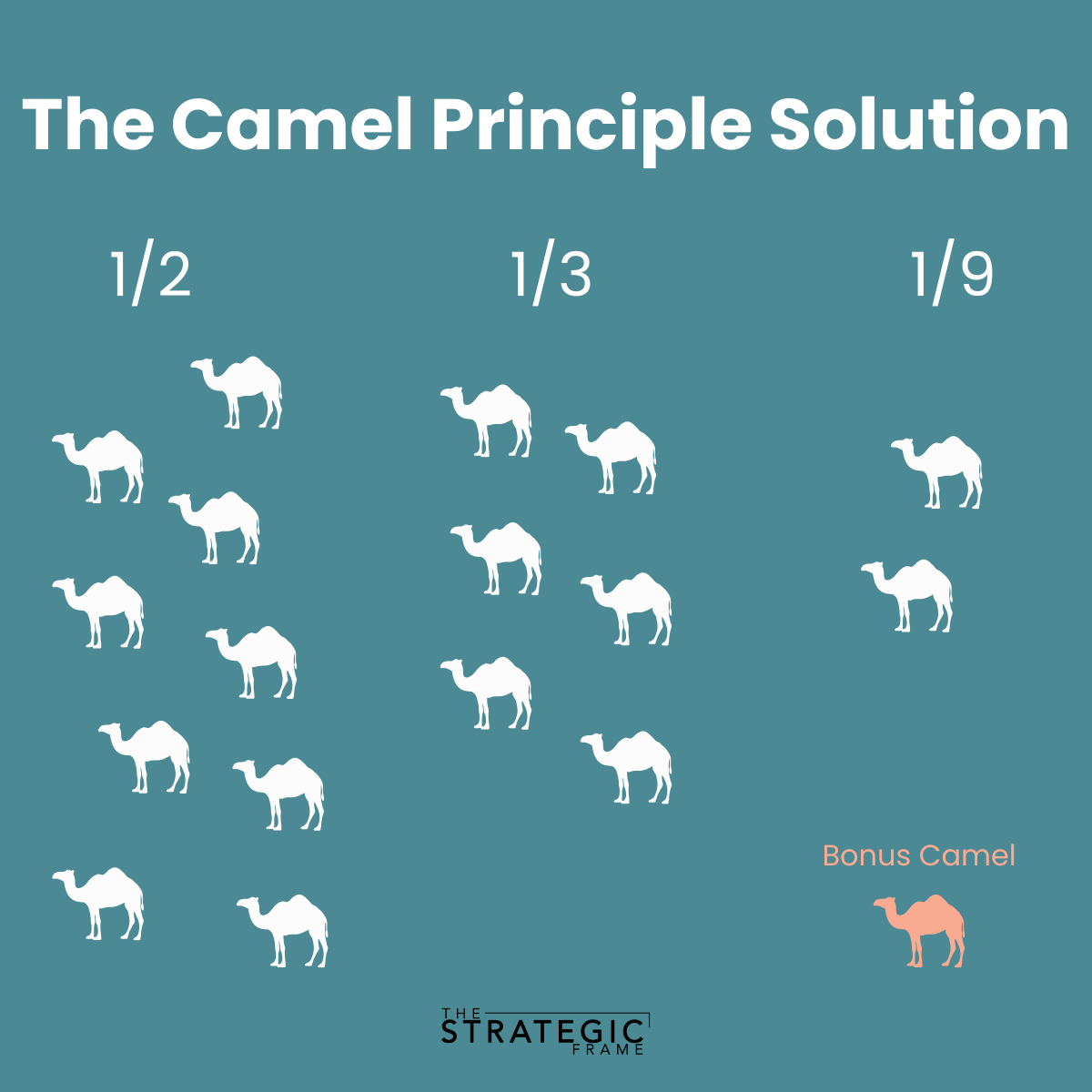The Camel Principle
Turn a complex problem into a simpler one by adding something temporary
EXECUTIVE SUMMARY:
The Camel Principle shows that adding something temporary can turn an unsolvable problem into a simple one, just like borrowing a camel makes the 17-camel riddle work. In business, a short-term resource such as a consultant or a well-run meeting can unlock clarity, save time, and create more value than it costs.
Consider this riddle: In ancient times, a father leaves seventeen camels to his three sons after he passes away. His will states that the oldest son should receive half of the camels, the middle son should receive a third of the camels, and the youngest son should receive a ninth of the camels. How many camels should each son receive?
As the story goes, the three sons visit a wise man in their village for advice. The wise man ponders their dilemma and eventually thinks of a solution, one that doesn’t involve chopping up camels into fractions.
The wise man goes to a neighbor and borrows one camel. Now, with a set of eighteen camels, they make their divisions.
18/2 = 9 camels
18/3 = 6 camels
18/9 = 2 camels
9 + 6 + 2 = 17 total camels
The borrowed camel was then simply returned to the neighbor.
What is The Camel Principle?
The Camel Principle is a problem-solving approach where you temporarily add and subtract (or multiply and divide by) the same quantity to turn a complex or unsolvable problem into a simpler one without changing its underlying truth.
More broadly, it shows that sometimes the key to solving a challenge is to add something temporary, such as a resource, a perspective, or a tool, that makes the path forward clear. Once the problem is solved, you can remove what you added, leaving the final outcome intact and at no additional cost.
Bringing The Camel Principle To Life
We may not be dividing camels today, but the principle still applies. In modern business, the Camel Principle shows up whenever a temporary addition unlocks progress and pays for itself many times over.
A company might bring in a consultant to untangle a growth bottleneck. The upfront expense may seem like an added burden, but if the consultant helps unlock a solution that drives new revenue or efficiency, the business can earn back the cost of the engagement and in many cases generate more profit than the investment required.
Another way this shows up is with meetings. Adding an extra meeting might feel like a waste of time, but if it is run well with a clear agenda it can align a team early, prevent confusion, and reduce the amount of work that needs to be redone later. That single added meeting can also save hours of future debate and correction, meaning the “extra” time actually creates a net gain in productivity.
Wrapping It All Up
The Camel Principle reminds us that sometimes the smartest way to move forward is not by forcing a solution within existing limits, but by adding something temporary that makes the path clear. Whether it is a consultant, a tool, or even a well-run meeting, these additions can unlock progress, save time, and often pay for themselves. The real power of the principle is that once the problem is solved, what you borrowed can be set aside, leaving you with the benefits and little or no lasting cost.
This email is sponsored by Marseille Inc
Experience your favorite games with unprecedented detail, clarity and quality using mClassic. This plug-and-play device upgrades your game console without having to upgrade the hardware itself. Enjoy the visuals of a higher resolution and improved graphics on any screen and take your entertainment to the next level. Shop now at https://marseilleinc.com/.



